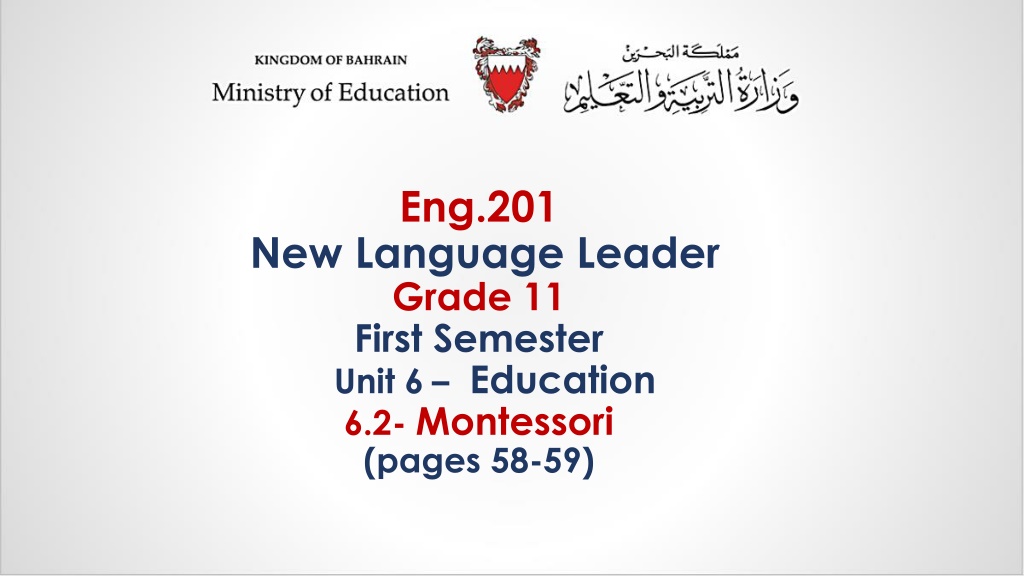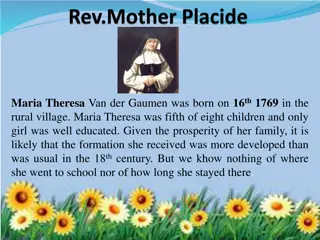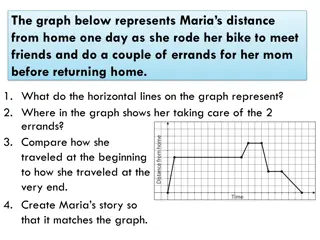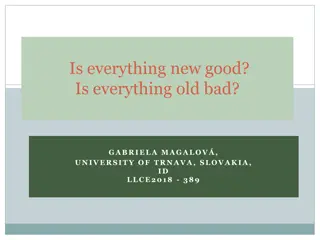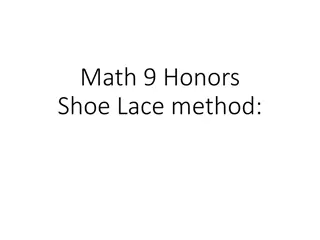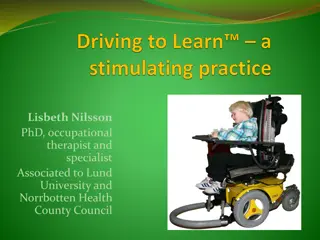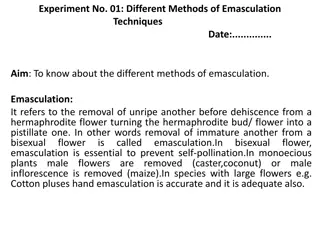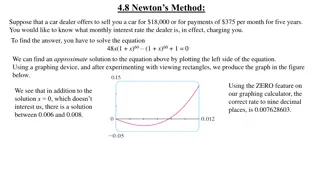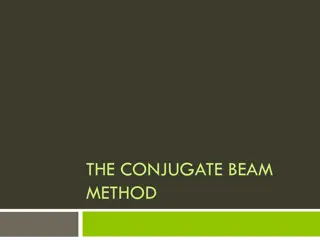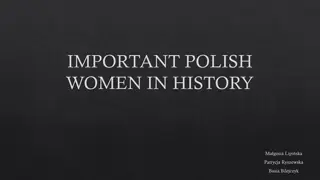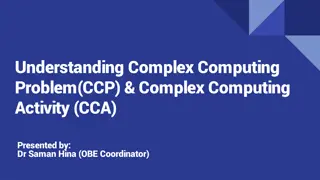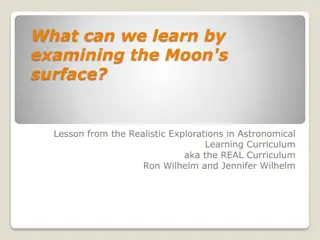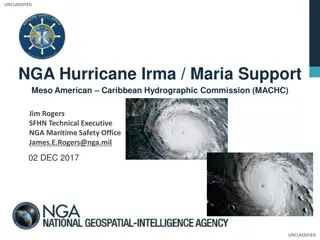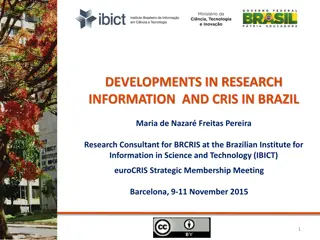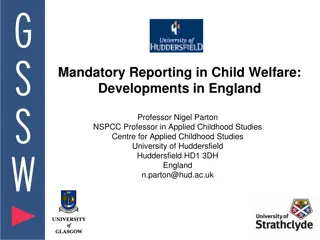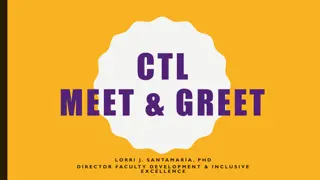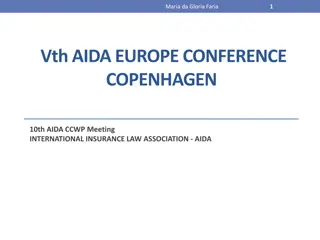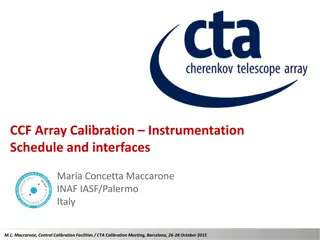Exploring Maria Montessori's Innovative Educational Method
Discover the pioneering work of Maria Montessori, an Italian physician and educator, who revolutionized learning for children through her Montessori Method. By creating a prepared environment and utilizing concrete materials, Montessori focused on cultivating independence, self-discipline, and confidence in children through hands-on exploration. Learn how her approach fosters socialization, respect, and cognitive development, emphasizing freedom within clear limits. Explore the impact of Montessori's method on education and teacher training.
Uploaded on Apr 05, 2024 | 0 Views
Download Presentation

Please find below an Image/Link to download the presentation.
The content on the website is provided AS IS for your information and personal use only. It may not be sold, licensed, or shared on other websites without obtaining consent from the author. Download presentation by click this link. If you encounter any issues during the download, it is possible that the publisher has removed the file from their server.
E N D
Presentation Transcript
Eng.201 New Language Leader Grade 11 First Semester Unit 6 Education 6.2- Montessori (pages 58-59)
ENG 201/ New Language Leader Objectives By the end of the lesson, you will be able to 1.extract information from a text. 2.identify the defining relative clauses. 3. use defining relative clauses.
ENG 201/ New Language Leader Introduction Answer the following question: 1. In your opinion, what are the qualities of a good teacher? Possible answer 1. A good teacher should be tolerant and sympathetic. He/ She should be caring and fair. He/ She should also be patient and organised. ENG 201 6.2- Montessori
ENG 201/ New Language Leader Read the following text : Maria Montessori for her educational method that builds on the way children learn naturally. Maria Montessori was born on August 31, 1870, in the provincial town of Chiaravalle, Italy. Montessori became the first female doctor in her country after she graduated from medical school in 1896. Later, working with deprived children, she set up a children s house in Rome and there she developed the Montessori Method. The Montessori Method is characterised by providing a prepared environment: tidy, pleasing in appearance, simple and real, where each element exists for a reason in order to help in the development of the child. The prepared environment offers the child opportunities to commit to interesting and freely chosen work, which brings out long periods of concentration that should not be interrupted. Freedom develops within clear limits, and this allows children to live in harmony with others in the small society they belong to in the classroom. ENG 201 6.2- Montessori Maria Montessori is an Italian physician, educator, and innovator, acclaimed
ENG 201/ New Language Leader Maria wanted children to work with concrete materials that were scientifically designed, which provide them with the keys to explore our world and develop basic cognitive abilities. The materials are designed to allow the child to recognise the error by him/herself and become responsible for his/her own learning. This method promotes socialization, respect and solidarity among them naturally. The adult is an observer and a guide: he/she helps and stimulates the child with all his/her effort. This allows children to act, want and think by themselves, and helps them to develop confidence and inner discipline. The Montessori environment is proportional to children's height and size, and it has low shelves and tables and chairs of different sizes where children can sit individually or in groups. The classroom is divided into theme areas where related materials and bibliography are exposed on the shelves, allowing great freedom of movement. Children can work in groups or individually, respecting their own style and rhythm. Each child uses the material he chose by taking it from the shelf and putting it back in its place so others can use it. The environment promotes the child s independence in the exploring and learning process. Freedom and self-discipline make possible that each child finds activities that respond to their evolutionary needs. Maria Montessori helped spread the method and trained many teachers to use her method. ENG 201 6.2- Montessori
ENG 201/ New Language Leader Answer the following questions: Correct the mistakes in the sentences below: 1. After graduation, Maria became the first educationalist in her country. 1. After graduation, Maria became the first female doctor in her country. Model answer 1. correct the mistakes in the sentences below: 1. After graduation, Maria became the first educationalist in her country. 2. Maria wanted children to work with concrete materials to develop their social abilities. 2. Maria wanted children to work with concrete materials to develop their cognitive abilities. 2. Maria wanted children to work with concrete materials to develop their social abilities. 3. The main role of the teacher/ adult in a Montessori classroom is to teach and explain. 3. The main role of the teacher/ adult in a Montessori classroom is to guide the children. 3. The main role of the teacher/ adult in a Montessori classroom is to teach and explain. 4. In a Montessori classroom, students have to sit in groups. 4. In a Montessori classroom, students have to sit in groups. 4. In a Montessori classroom, students can sit individually or in groups. 5. Each child uses the material he chose by asking the nanny to give it to him/her. 5. Each child uses the material he chose by asking the nanny to give it to him / her. 5. Each child uses the material he chose by taking it from the shelf. ENG 201 6.2- Montessori
ENG 201/ New Language Leader Defining Relative clauses: Look at the following defining relative clauses from the text: 1. Montessori is acclaimed for her educational method that builds on the way children learn naturally. 2. A Montessori classroom is tidy, pleasing in appearance, simple and real, where each element exists for a reason. What are Defining Relative clauses? Defining relative clauses gives us information about who or what we are talking about. ENG 201 6.2- Montessori
ENG 201/ New Language Leader Match the defining relative clauses to their right use. Model answer Used to give information about a person Who/that Used to give information about a place Whose Used to give information about things or ideas Which /that Which /that Where When Where Used to give information about time Used to give information about a person s belongings Who/that Whose When ENG 201 6.2- Montessori
ENG 201/ New Language Leader Choose the correct answer : Model answer 1. Maria Montessori is an educationalist ------------- influenced many students to learn independently. A. Which B. Who C. Whose A. Which B. Who C. Whose 2. Maria wanted children to work with concrete materials ------------- were scientifically designed. A. Which B. when C. where A. Which B. when C. where 3. Montessori provided a tidy and pleasing environment ------------- children can learn naturally. A. when B. Who C. where A. when B. Who C. where ENG 201 6.2- Montessori
ENG 201/ New Language Leader Combine two sentences using defining relative clauses: (make necessary changes) Model answer 1. My new neighbour is curious. I met yesterday Example : My new neighbour who (that) I met yesterday is curious 2. This is the university. I met my best friend This is the university where I met my best friend. 3. I bought the handbag yesterday. You told me about. I bought the handbag which (that) you( had) told me about. ENG 201 6.2- Montessori
ENG 201/ New Language Leader Complete the sentences, using the defining relative clause to express your opinion: Model answer 1. I really hate people who -------------------------. I really hate people who are moody and bad-tempered. 2. The most unforgettable moment was ----------------------------------. The most unforgettable moment was when I graduated from university 3. Places I advice people to visit --------------------------------------. 3. The places I advice people to visit are places where they can feel free and try new things. ENG 201 6.2- Montessori
ENG 201/ New Language Leader End of the lesson ENG 201 6.2- Montessori
